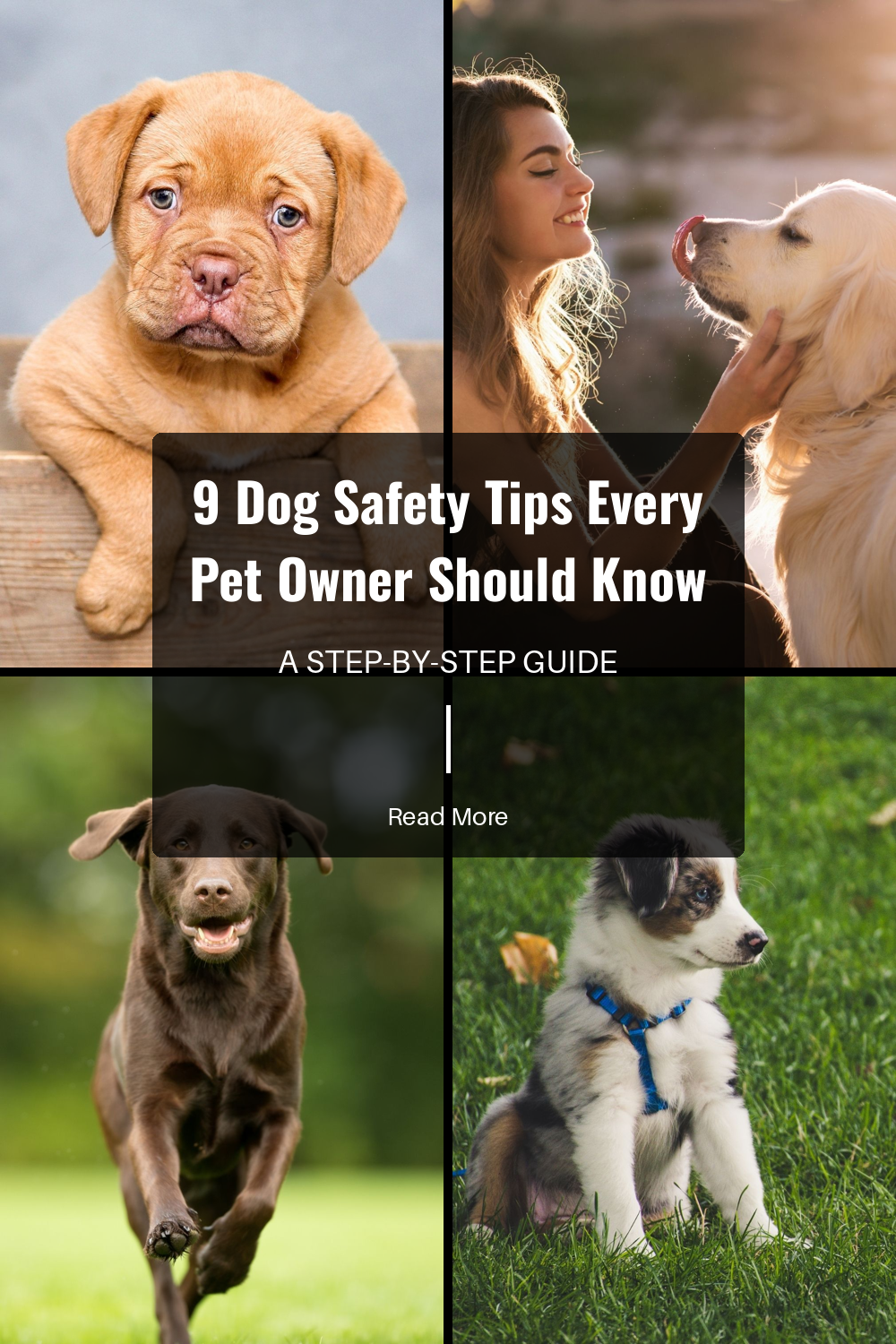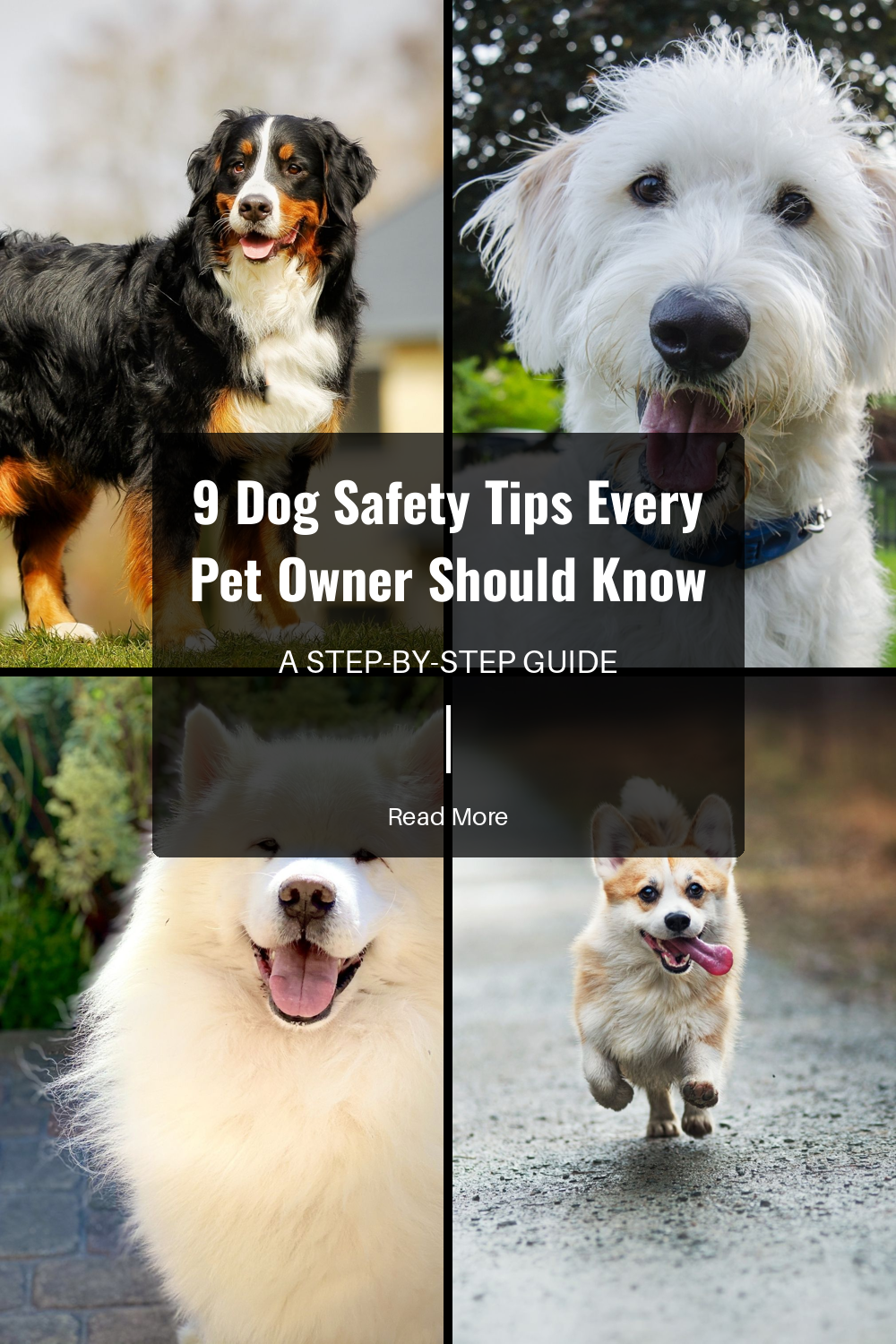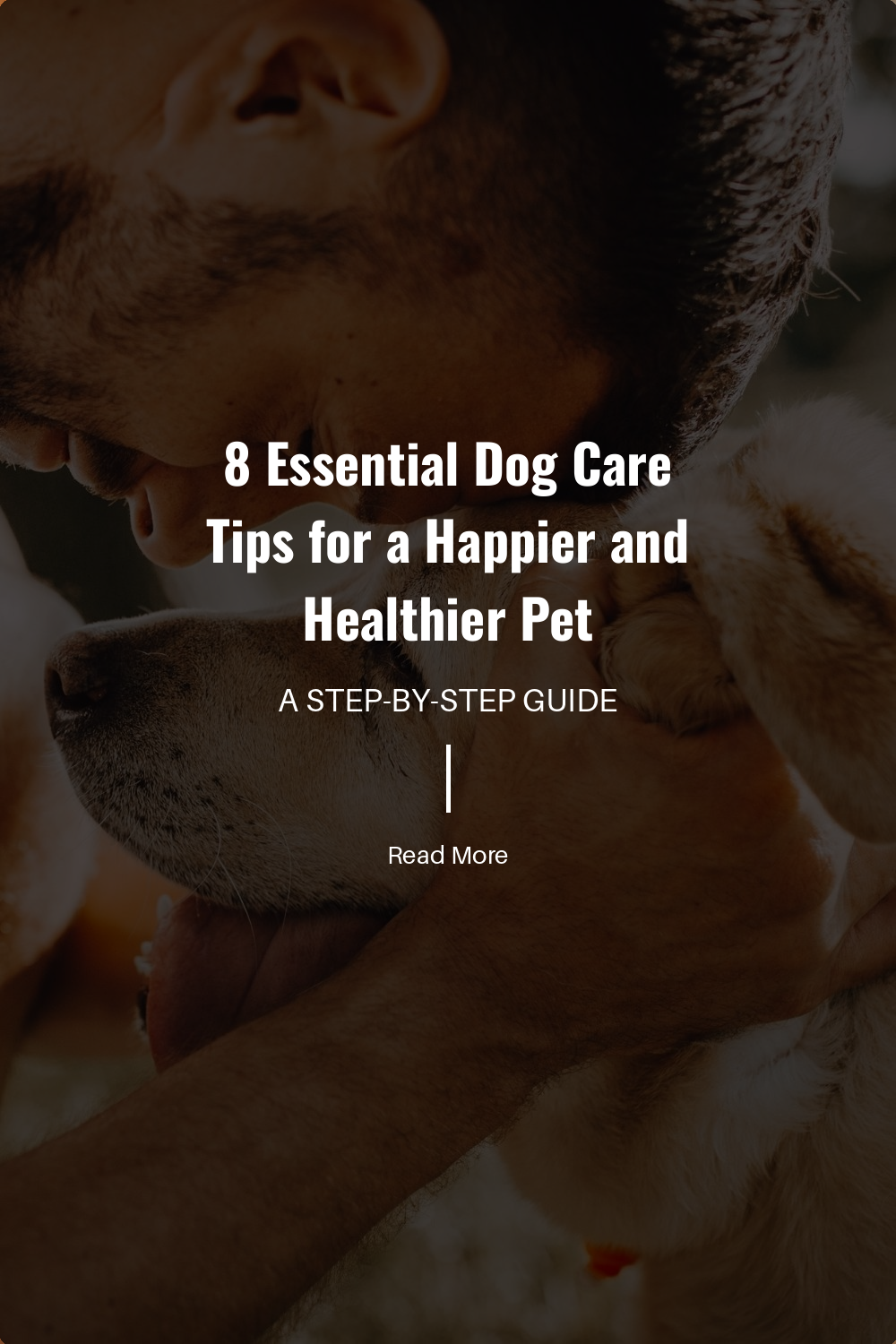Dog safety tips are essential for every pet owner. Knowing how to keep your furry friend safe at home and outdoors can make a big difference in their well-being. In this article, we’ll share 9 critical dog safety tips that will help you protect your beloved pet from potential dangers. These dog safety tips will guide you through important practices, from securing your home to understanding common hazards in the environment.
Each tip focuses on practical steps you can take to ensure a safe and worry-free life for your dog. Whether you have a playful puppy or a senior dog, these tips apply to all breeds and sizes. By following these guidelines, you can create a safer space for your pet, enjoy your time together, and reduce the risk of accidents. Being proactive about dog safety is a responsible approach for all dog owners. Let’s dive into these essential dog safety tips that every pet parent should know!
Secure Your Home

Creating a safe environment for your dog starts at home. Dog-proofing your space is crucial to keep your furry friend safe from accidents or injuries. Begin by examining your home for any hazards. This includes electrical cords that might tempt them to chew, as well as small objects like buttons or coins that could be swallowed.
Toxic Plants
Many household plants can be toxic to dogs. Common examples include lilies, azaleas, and philodendrons. Research which plants you have, and if any pose a danger, consider removing them or placing them in areas your dog cannot reach.
Safety Gates
Consider installing safety gates in areas where you don’t want your dog to roam. This is especially handy if you have stairs or places where you store cleaning supplies and other hazardous materials. These gates can help keep your pet in a safe area while giving you peace of mind.
Regular Checks
Regularly check your home for new items that could pose a risk. This includes cleaning supplies, garden chemicals, and even some human foods that may be toxic to dogs. Keeping a clean and organized space helps minimize potential dangers.
Don’t forget about your dog’s basic health needs, too. Regular treatments for fleas and ticks are important for keeping them comfortable and safe. If you haven’t done so already, check out this dog flea and tick treatment to protect your pet from pesky pests.
In conclusion, by dog-proofing your home, you create a nurturing environment that keeps your furry friend safe. Simple actions can lead to a happy and healthy life for your dog.
Proper Identification

Ensuring your dog has proper identification is one of the most critical steps in keeping your pet safe. A collar equipped with an ID tag is essential. The ID tag should include your dog’s name and your contact information. This simple step can make a significant difference if your dog ever gets lost. When someone finds your pet, they can quickly reach out to you, allowing a speedy reunion.
Microchipping for Extra Safety
In addition to a collar, consider microchipping your dog. A microchip is a small device implanted under your dog’s skin. It contains a unique identification number that links back to you, the owner. If your dog runs away or gets lost, animal shelters and veterinarians can scan the chip to retrieve your information, significantly enhancing your chance of finding your furry friend.
Regularly Check Your Dog’s ID
It’s vital to regularly check that your dog’s ID tag stays secure and readable. Sometimes, tags can wear down or fall off. If your dog is active, especially in the woods or during playtime, consider using a sturdy collar that can withstand wear and tear.
Taking these dog safety tips seriously can help ensure your pet is always identifiable, even in unexpected situations. Remember, being proactive today can save a lot of stress and heartache in the future.
For extra protection against flea and tick infestations, check out this dog flea and tick treatment. Your pup deserves the best care possible!
Safe Outdoor Spaces

Creating a safe outdoor environment for your dog is essential for their well-being. One of the first steps is to check your yard for potential dangers. Look for toxic plants that could harm your pup. Some common toxic plants include oleander, azaleas, and sago palms. Ensure that your dog does not have access to these plants while playing outside. You can consult your local nursery or vet for a complete list of toxic plants in your area.
Next, inspect your yard for sharp objects. Items like broken glass, rusty nails, or sharp stones can cause injury. Regularly clean your yard to keep it safe and enjoyable for your furry friend. You can also look for dog-friendly landscaping options that won’t pose a danger.
Another important tip is to check your fencing. A secure fence is vital to prevent your dog from escaping. Make sure there are no gaps or weak spots where your dog could dig under or jump over. If your dog has a habit of trying to escape, consider putting in an additional barrier or a higher fence. Additionally, provide plenty of stimulation and exercise to keep your dog happy and less likely to wander.
By following these simple dog safety tips, you can create a protected outdoor space for your pet. Enjoying safe playtime will help keep your dog healthy and injury-free. Remember, when exploring the outdoors, it’s a good idea to keep up with flea and tick treatments as well, ensuring that your dog remains parasite-free. Check out effective options like dog flea and tick treatment or try a dog flea comb to keep your pet safe from flicking pests.
Car Safety

When traveling with your dog, safety is crucial. Always use a dog seat belt or a secured crate while driving. These tools help to keep your furry friend safe, preventing them from jumping around the car or getting injured in an accident. Dog seat belts are specially designed to attach to your pet’s harness. This way, they remain safe and secure without loose movement.
Let’s discuss some important reasons to keep your dog safe in the car:
Preventing Injuries
Allowing your dog to hang their head out of the window might seem fun for them, but it can lead to serious injuries. Debris and passing objects can harm your dog surprisingly quickly. A sudden stop can also cause them to tumble or get hurt. Keeping your dog restrained is one of the best dog safety tips you can follow.
Comfort and Calm
A stressed dog can be a distracted dog. When your pet is secure in their seat belt or crate, they are less likely to feel anxious about the ride. A crate can also help them feel comfortable and safe, reducing anxiety during longer trips.
Overall Safety
Using a dog seat belt or crate is a smart way to protect your pet. Not only does it keep them safe from harm, but it also ensures that you, as a driver, can focus on the road. If you’re planning a long trip, you might also want to consider a flea and tick treatment to keep your pet protected during your travels. You can find reliable options here.
By following these simple tips, you make every journey safe and enjoyable for both you and your dog.
Supervise Interaction with Other Animals

Always keep an eye on your dog when they are playing with other pets or animals. Supervision is key to ensuring that everyone stays safe and happy. Dogs can sometimes misinterpret signals from other animals. This can lead to potential conflicts that might escalate quickly if not managed.
If you notice signs of discomfort, such as growling or stiff bodies from any dog involved, it’s time to step in. The best way to prevent conflict is to understand your dog’s body language and behavior while around others. Dogs communicate with each other primarily through body language, and not every interaction will be friendly.
Tips for Supervision
- Stay Nearby: Always remain within a reasonable distance while your dog is playing. This allows you to quickly respond if a problem arises.
- Know the Other Pets: Familiarize yourself with the personality and behavior of the other animals your dog interacts with. Some may be friendly, while others may not.
- Avoid Overcrowded Spaces: Large groups can lead to stress and anxiety for dogs. More animals in one space can mean more potential for miscommunication.
- Keep an Eye on Play Styles: Different breeds have different play styles. Ensure your dog is comfortable with the way others play, and intervene if they seem overwhelmed.
By following these simple dog safety tips, you can help ensure safe and enjoyable interactions for your furry friend. Remember, your vigilance can prevent injury and create a positive experience for everyone. And don’t forget to keep your dog protected from fleas and ticks with treatments like this flea and tick treatment or use a flea comb to keep your pet comfortable and healthy during playtime.
Vaccinations and Regular Vet Visits

Keeping your dog healthy starts with staying on top of their vaccinations and regular check-ups. Vaccinations are essential for protecting your dog from serious diseases like parvovirus, distemper, and rabies. These diseases can be severe, and treatment can be costly. By vaccinating your dog and ensuring their shots are up to date, you greatly improve their chances of a long and healthy life.
Regular vet visits are just as important. During these check-ups, your veterinarian can catch any health issues before they become serious. They can also provide you with advice on diet, exercise, and behavioral concerns, helping you keep your furry friend in the best shape possible.
Take a moment to check for any signs of fleas or ticks during your grooming sessions. These pests can transmit diseases and cause discomfort for your dog. Using a good dog flea and tick treatment can be an effective way to keep your pet safe from these pests. A dog flea comb can also help remove any unwanted visitors.
Remember, consistent vet visits and keeping your vaccinations up to date are some of the best dog safety tips. By making these practices a habit, you’re investing in your dog’s well-being and happiness.
Chew Toys and Playtime Safety

When it comes to ensuring your dog’s safety, providing the right chew toys and monitoring playtime are crucial. Dogs love to chew on things, but not all toys are safe for them. Always choose toys specifically designed for dogs, as they are crafted to withstand strong bites and are less likely to break apart.
Safe Chew Toys
Look for chew toys made from durable materials. Rubber or hard nylon toys are often good options. These materials can endure aggressive chewing and will help keep your dog’s teeth clean. Avoid toys with small parts that can be easily swallowed. If broken pieces occur, remove the toy immediately to prevent choking or intestinal blockages.
Monitoring Playtime
Always watch your dog during playtime. It’s easy to lose track of them while they enjoy their toys, but a few moments of inattentiveness might be all it takes for an accident to happen. Encourage interactive play instead of leaving them alone with toys. This not only ensures their safety but also strengthens the bond between you and your pet.
When you notice toys starting to wear down or crack, it’s time to replace them. Damaged toys can pose a risk, leading to chewing off small pieces that could be swallowed. Regularly check your dog’s play area to remove any dangerous items, which is one of the best dog safety tips you can adopt.
Lastly, for overall health and safety, consider using treatments like dog flea and tick treatment to keep your pet comfortable during outdoor activities.
Avoid Extreme Temperatures

Keeping your dog safe in different weather conditions is crucial. Never leave your dog in a hot or cold car, even for a short period. Cars can heat up quickly in the summer, leading to heatstroke. On the other hand, cold weather can cause hypothermia in pets. If you see anyone leaving a dog in a parked car in extreme temperatures, it’s important to intervene.
At home, ensure your dog has a comfortable environment. This means providing a cool spot during summer and a warm area in winter. Use fans or air conditioning when it’s too hot, and ensure that your dog has plenty of fresh water at all times. Staying hydrated is important, especially during the warmer months.
Create a Safe Space
To help your furry friend feel secure, set up a cozy area in your home. This space should be:
- Free from drafts
- Away from extreme heat sources
- Equipped with their favorite blanket or bed
Monitoring your dog’s wellbeing during extreme weather is essential. Regularly check their water bowls and comfort level. If it becomes too hot or too cold, adjust their environment accordingly.
By following these dog safety tips, you can make sure your beloved pet remains happy and healthy, no matter the weather. Don’t forget to keep an eye out for fleas and ticks as they can thrive in warmer temperatures. Consider using a reliable dog flea and tick treatment if necessary: Dog Flea and Tick Treatment.
Hazard Awareness During Walks

When you take your dog for a walk, it’s essential to stay alert and aware of your surroundings. Many hazards lurk on sidewalks, parks, and streets that can harm your furry friend. Broken glass, for instance, can cause painful cuts to your dog’s paws. Always keep an eye out for any sharp objects that could endanger your pet.
Another potential danger comes from harmful chemicals. Some people use pesticides or fertilizers on their lawns which can easily be transferred to your dog’s paws. When your dog licks their paws or fur, these substances can enter their system, leading to serious health issues. To keep your pet safe, try to avoid walking in areas where you know chemicals have recently been applied.
While you’re watching for hazards, don’t forget about other dangers like busy roads or aggressive dogs. Keep your dog on a leash to ensure you can control them if needed. You should also steer clear of unfamiliar dogs or those that show signs of aggression.
Lastly, remember to check your dog’s coat regularly for fleas and ticks after walks. These pests can hide in tall grass or bushes, posing health risks to your pet. Using a dog flea comb can help you inspect their fur more thoroughly and keep your dog safe from potential infestations.
Bottomline
In conclusion, dog safety tips are crucial for every pet owner looking to ensure their furry friend’s well-being. By securing your home, providing proper identification, and being aware of outdoor hazards, you can create a safe environment for your dog. Remember to supervise interactions, prioritize car safety, and keep up with vaccinations and vet visits.
Additionally, be mindful of temperature extremes and understand the risks during walks. Following these dog safety tips will help you prevent accidents and create joyful moments with your beloved pet. Always strive to be a responsible pet owner and keep these important tips in mind for a healthier, happier life for your dog.





